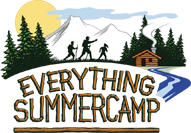Hey, Summertime Explorers!
We love discussing all the amazing activities that may be available to you for your summer camp stay. If you’re passionate about Caving (also known as ‘spelunking’), maybe you were fortunate enough to attend a camp that offers it as one of their activities! Cave exploration is a thrilling experience. Today we're talking about some of the ways for you to get the most out of this awesome opportunity!
The advice to “travel light” has never been more appropriate than with Caving. Be safe with the proper equipment. Bring enough, but only what you need and the lighter-weight your gear is, the better! A few essentials to have along are:
- Food and Water—Have enough with you to last at least a day or even two.
- First Aid Kit—When accidents happen you need to be prepared under the ground.
- Extra Clothes—Caves are notorious for wet and muddy conditions; have an extra set of clothes to change into when your adventure is over.
Don’t Take it to the Limit
If you’re starting to feel kind of weird, be sure to let others know it. If you start feeling tired, uncomfortable, claustrophobic, or just not quite right, make sure that you take a break and rest before continuing on.
Stick Together
Caving trips should always be done in groups. The only reason to ever split from the group would be a serious injury or emergency.
Have a Plan
Confirm that every in your group knows what the emergency plan is. Appoint someone as the trip leader to make decisions during the crisis. You should only ever take action without consulting your trip leader if you’re life’s endangered.
Rule of Three
Similar to climbers, cave explorers should maintain three points of contact to prevent you from slipping and falling. When moving on rough terrain, always keep three points of contact.
Protect the Cave
It’s simple: Take nothing but photos, leave nothing but footprints. Caves are fragile ecosystems. It’s the natural habitat of the bat. Bats live and breed in caves. You should never damage or alter the cave and definitely never leave any trash behind. Also, do not disturb the bats!
Check out a previous Blog post about the boys who discovered the Crystal Cave here in our home state of Wisconsin. Click here to read it and enjoy spelunking if you get the opportunity to this summer! Have fun and experience a whole new world that’s totally peaceful, pitch-black, and quiet. As always, thanks for reading!
- John



 Other games of a great likeness were played for hundreds of years, widespread across Europe and Asian countries like China, Egypt, Greece, India,
Other games of a great likeness were played for hundreds of years, widespread across Europe and Asian countries like China, Egypt, Greece, India,  Japan, and more. It was around 1850 when officers of the British military came across a popular game in the Indian town of Poona. There, they simply called the game Poona.
Japan, and more. It was around 1850 when officers of the British military came across a popular game in the Indian town of Poona. There, they simply called the game Poona.

 existed, people would drape or tie natural elements around their bodies such as animal skins, fur, grass, leaves, bones, shells, and anything else handy that worked.
existed, people would drape or tie natural elements around their bodies such as animal skins, fur, grass, leaves, bones, shells, and anything else handy that worked. 
